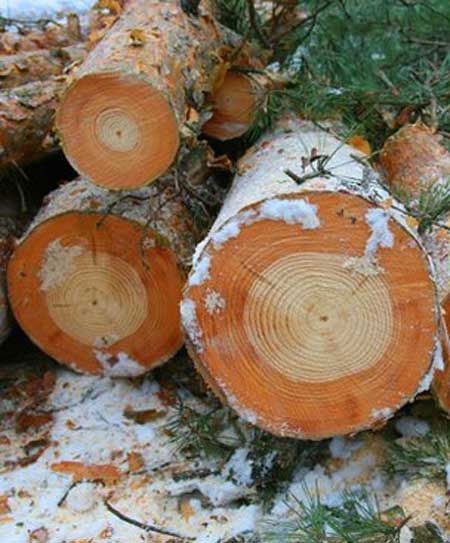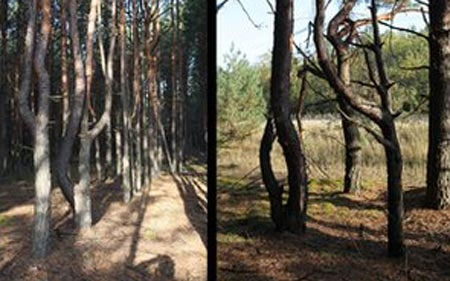Sequelae of nuclear leakage on Chernobyl trees
Radiation exposure from the Chernobyl incident in 1986 left long-term sequelae on trees in the area, according to a new study.
US researchers said the worst effects were recorded in the first few years after the nuclear disaster. However, surviving plants are very vulnerable to stressful environmental conditions, such as drought.
Writing in Trees magazine, the research team emphasized that their work is the first to consider the effect on a panoramic scale. They discovered that the saplings were especially affected by the nuclear incident that happened nearly three decades ago.

The color change of the growth ring on the log chain indicates the year of the Chernobyl nuclear leak.(Photo: BBC)
Tim Mousseau, a research team member from the University of South Carolina (USA), stated: "Our results are consistent with previous findings of sample-based studies on a smaller scale. They are also consistent with many reports of genetic effects on plants, many of which show high rates of abnormal growth, reflecting the consequences of genetic modification and cell death from exposure. with radiation leakage ".
In their study, Professor Mousseau and his colleagues chose to examine the core samples of the sycamore trees, as they were found throughout Europe and grown very much in the Chernobyl area due to their High economic value. In addition, growth rings on the tree parts are also easier to read in other plant species in the study area, such as birch trees.


The phenomenon of twisted limbs is thought to be due to sudden changes in radiation exposure.
Mousseau's group hopes to continue their research in Japan's Fukushima region, where logging has a huge impact on the economy and pine trees are also widely cultivated.
"Based on our limited observations in the field of Fukushima's most serious radioactive areas, there seems to be no mass death of trees as noted for the chained trees at Chernobyl. However, we found that there is a gradual death of growing shoots and branches in some areas, implying that the incident could affect plant growth. This still needs further investigation. " , Mr. Mousseau explained.
- Ukraine unloaded the 'concrete coffin' that was about to collapse at the Chernobyl factory
- New discovery of the Chernobyl nuclear disaster effect
- Radioactivity at Chernobyl lasted longer than expected
- Wild animals proliferate where ever a nuclear disaster occurred
- Photos of 30 years of disaster Chernobyl nuclear power plant
- China built a power plant near the Chernobyl nuclear grave
- Radiation from Fukushima is only 10% of the Chernobyl case
- Europe at risk of radiation radiation
- Nuclear disaster can happen at any time
- The first bottle of vodka in the world produced by Chernobyl cereals
- Radiation is still in agricultural products after 25 years
- Chernobyl: The 30-year exotic forest doesn't decompose
 Why do potatoes have eyes?
Why do potatoes have eyes? 'Tragedy' the world's largest carnivorous life: Death becomes ... public toilet
'Tragedy' the world's largest carnivorous life: Death becomes ... public toilet Tomatoes were once considered 'poisonous' for 200 years
Tomatoes were once considered 'poisonous' for 200 years Detecting microscopic parasites on human face
Detecting microscopic parasites on human face